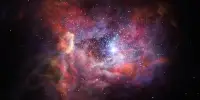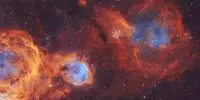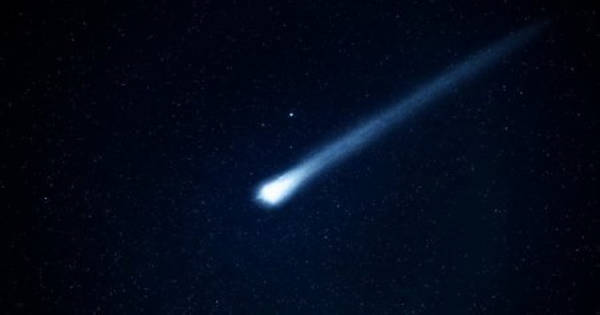A globular cluster is a spherical grouping of stars. It is a dense, gravitationally bound group of stars that revolves around the galactic core. Globular clusters are gravitationally bound together, with a higher concentration of stars near their centres. These clusters are usually spherical in shape and can contain thousands to millions of stars packed in close quarters. They can have tens of thousands to many millions of stars as members. They are some of the oldest known objects in the universe and can be found in galaxies’ outer regions. Their name is derived from the Latin word globulus, which means “small sphere.” Globular clusters are also referred to as “globulars” on occasion.
Although one globular cluster, Omega Centauri, was discovered in antiquity and was long thought to be a star, the true nature of the clusters was discovered with the invention of telescopes in the 17th century. Globular clusters appeared as fuzzy blobs in early telescopic observations, prompting French astronomer Charles Messier to include many of them in his catalogue of astronomical objects that he thought could be mistaken for comets.
Key characteristics of globular clusters include:
- Star Density: These are incredibly dense, with stars packed closely together. Despite their small size compared to the entire galaxy, they can contain a significant fraction of the galaxy’s total stars.
- Old Age: These are among the oldest objects in the universe, with ages often exceeding 10 billion years. Their formation is thought to be closely tied to the early history of their host galaxies.
- Spherical Shape: The stars in a globular cluster are distributed in a roughly spherical shape, giving them a distinct appearance in the night sky.
- Gravitational Bound: The stars in a globular cluster are gravitationally bound to each other, meaning they are held together by their mutual gravitational attraction. This is what keeps them in a relatively compact and stable structure.
- Lack of Interstellar Matter: These have little to no interstellar matter (gas and dust) in their vicinity. This is because the interstellar matter has either been used up in the formation of stars or expelled from the cluster due to the intense radiation and stellar winds from the massive stars within it.
Using larger telescopes, 18th-century astronomers discovered that globular clusters are collections of numerous individual stars. The distribution of globular clusters in the sky was some of the first evidence that the Sun is far from the centre of the Milky Way in the early twentieth century.
Globular clusters are critical to understanding galaxy formation and evolution. Individual stars and their properties can provide valuable information about the early universe, stellar evolution, and galactic dynamics. Observing globular clusters also aids astronomers in determining the distances between galaxies and provides a unique laboratory for studying stellar interactions and dynamics in a dense environment.
















